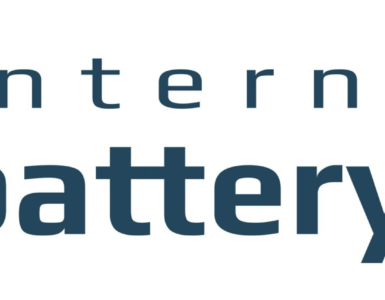Argentina Lithium further delineates concentrated lithium brine zone at rincon west project.
Argentina Lithium & Energy Corp. (TSXV: LIT) (FSE: OAY3) (OTC: PNXLF), (“Argentina Lithium” or the “Company”) reports continued positive lithium brine results at its Rincon West Project in Salta Province, Argentina, including a 178 m* section with results ranging from 241 to 340 mg/l lithium (*no sample was collected from 30 m of this interval) from the seventh diamond drill hole of the current program.
Miles Rideout, V.P. of Exploration, said:
These new results demonstrate the continuity of concentrated lithium brines within our exploration area and expands the area known to host lithium brines to the northwest.
“We have been pleased by the extensive vertical column of concentrated brines intersected to date in the core of our basin. The drill program has confirmed the original geophysical interpretation for conductive brine aquifers very well, providing confidence in the potential for future drilling on the extensive untested portions of the geophysical anomaly to continue to potentially extend our zone of lithium-rich brines.”
🔥 What about we co-host a webinar? Let's educate, captivate, and convert the battery economy!
Batteries News is the global go-to online magazine for the battery industry, we can help you host impactful webinars that become a global reference on your topic and are an evergreen source of leads. Click here to request more details
The results of the brine analyses for holes seven and eight are shown in Table 1, as well as the type of sample collected, and the respective intervals from which brine was recovered. The ninth and final hole of the program was recently completed and laboratory analytical results are pending.
Rincon West Project and Program Details
The Rincon West Project, located west and north of Rio Tinto’s adjacent Rincon Project, covers 3742.8 hectares of the salar basin. Figure 1 presents a map of the Rincon West property showing the positions of the nine permitted and completed exploration holes from this program (see News Releases dated July 13, 2022, October 3, 2022, October 25, 2022 and January 26, 2023).
The map in Figure 1 displays the drill locations overlaid on the conductive zones delineated with TEM geophysics (see May 2, 2022 News Release; Note: the easternmost property extension was acquired after the completion of the TEM survey and therefore shows no geophysics results).
Drilling was carried out by Salta-based AGV Falcon Drilling SRL, under the supervision of Argentina Lithium’s geologists. Drill holes RW-DDH-007 and RW-DDH-008 were executed with diamond drilling (HQ-diameter), permitting the extraction of core samples of the salar basin formations and recovery of brine samples where possible.
Argentina Lithium’s preferred method for brine sampling deploys a ‘single packer’ sampling unit during drilling. The packer sampling method allows the recovery of brine samples at specific depths while sealing the hole at the top and bottom of the interval. For single packer sampling, an inflatable seal closes the top of the interval; the lower limit of drilling represents the bottom of the interval.
In certain instances, double packer sampling is conducted following the completion of drilling. In this case, inflatable seals are employed to close both the top and bottom of the sample interval. The maximum span of double packer sampling is limited to less than 4 m by the height of the drill mast and other equipment limitations.
Table 1: Interval data and results of brines analyses for lithium, potassium, and magnesium for drill holes RW-DDH-007 and RW-DDH-008

Table 2: Collar and maximum depth information for RW-DDH-007 and RW-DDH-008

Observations regarding RW-DDH-007
RW-DDH-007 is an in-fill hole in the south-central portion of the basin. From near surface to 66 m depth, sandy units were crossed with gravel and clay beds. Sulphate minerals appear in the sedimentary sequence below 66 m, with particularly high concentration between 90 and 116 m depths.
Fine-to-medium sandy units extended from 116 to 191 m, with layers of clay, sulphates and fine gravels observed infrequently. Basement clasts were also observed sporadically at some levels. From 191 to 215 m depth, a unit of coarse-to-medium sands was intersected. Ignimbrites with little fracturing were intersected between 215 and 285 m depths.
From 285 m to the bottom of the hole, what are interpreted as basement units with varying degrees of alteration and silicification were intersected. The hole was terminated at 347 m depth in argillic-altered granite.
Observations regarding RW-DDH-008
RW-DDH-008 extends drilling to the northwest and infills an undrilled area between holes RW-DDH-005 and 006. Gravels and sands were drilled in the top 26 m of this hole, underlain by 6 m of weakly-cemented volcanic tuff. Sandy units resumed at 32 m, initially with a large amount of organic material, and with sulphates beginning at 37 m depth. A silt layer with clay was crossed between 40 and 62 m.
Fine sands with coarse gravel layers were intersected between 62 and 83 m, extending to 86 m with poorly consolidated sands. There follow 5 m of sands in a clay matrix, and from 91 to 122 m, coarse-to-medium sands containing basement clasts. From 122 to 182 m, another coarse-to-medium sandy unit was crossed exhibiting ignimbrite clasts and very infrequent clay layers.
The hole crossed ignimbrite with little fracturing between 182 and 277 m depth. The underlying transition showed 1.5 m of breccia with angular basement clasts, followed by quartzite basement. The uppermost 30 m of basement displays fractures filled with pyrite, hematite and chlorite. The drill was stopped at 323 m in quartzite basement with little fracturing.
All core samples recovered by drilling were retained for geologic logging. An extensive selection of samples has been sent for brine recovery testing at an independent laboratory. This analysis remains pending.
Analyses and QA/QC
Samples of brine were submitted for analysis to Alex Stewart International Argentina S.A. (“Alex Stewart”), the local subsidiary of Alex Stewart International, an ISO 9001:2008 certified laboratory, with ISO 17025:2005 certification for the analysis of lithium, potassium and other elements.
Alex Stewart employed Inductively Coupled Plasma Optical Emission Spectrometry (“ICP-OES”) as the analytical technique for the primary constituents of interest, including boron, calcium, potassium, lithium, and magnesium. Measurements in the field included pH, electrical conductivity, temperature and density.
The quality of sample analytical results was controlled and assessed with a protocol of blank, duplicate and reference standard samples included within the sample sequence. For the holes RW-DDH-007 and 008 reported herein, the blank (2) and duplicate (2) samples reported within the acceptable range.
A single low-grade and either a medium-grade or high-grade reference standard sample was included within the submitted samples for each hole. The low-grade reference standard analyses were above 3 standard deviations (SD) with between 2.0 and 8.6 relative percent difference (RPD) from the best value; the medium grade reference standard inserted into the hole RW-DDH-007 sample sequence was within 2 SD below the best value with 0.75 RPD; the high-grade reference standard inserted into the hole RW-DDH-008 sample sequence returned less than 3 SD below the best value with a 2.46 RPD.
Qualified Person
David Terry, Ph.D., P.Geo. is the Company’s Qualified Person as defined in National Instrument 43-101. Dr. Terry is responsible for oversight of the Company’s early-stage exploration at the Rincon West property. The disclosure in this news release has been reviewed and approved by Dr. Terry.
About Argentina Lithium
Argentina Lithium & Energy Corp is focused on acquiring high quality lithium projects in Argentina and advancing them toward production in order to meet the growing global demand from the battery sector. The management group has a long history of success in the resource sector of Argentina and has assembled a first-rate team of experts to acquire and advance the best lithium properties in the “Lithium Triangle”. The Company is a member of the Grosso Group, a resource management group that has pioneered exploration in Argentina since 1993.
Argentina Lithium Further Delineates Concentrated Lithium Brine Zone at Rincon West Project, VANCOUVER, BC, April 24, 2023








